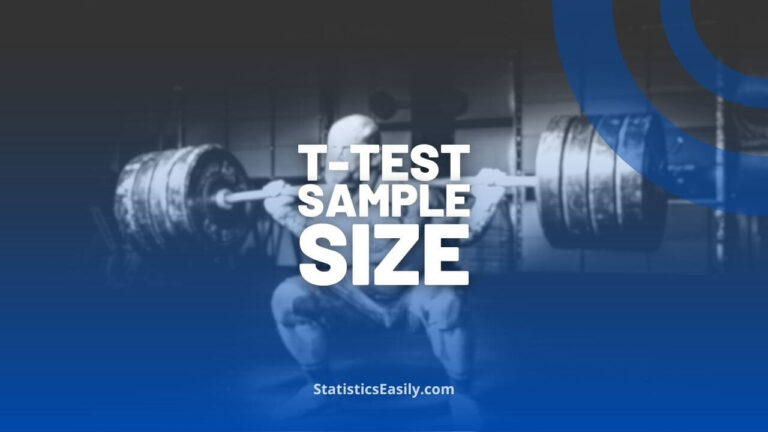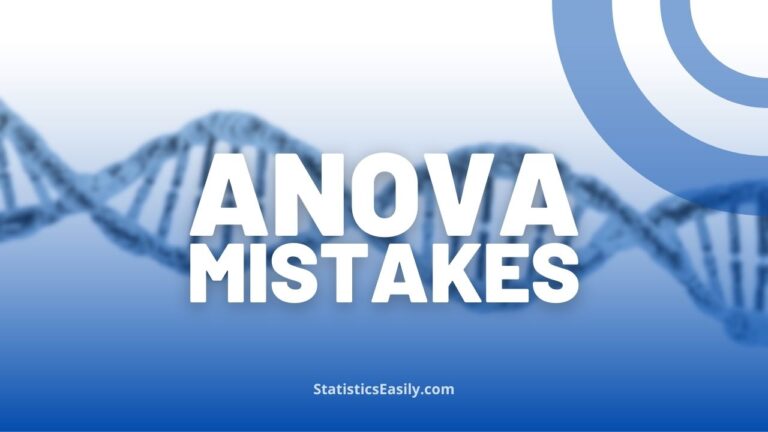ANOVA and T-test: Understanding the Differences and When to Use Each
You will learn the critical distinctions between ANOVA and t-test, enhancing your data analysis acumen.
Introduction
In statistical analysis, ANOVA (Analysis of Variance) and the t-test are pivotal techniques for comparing group means. Each method is distinct in its application, catering to specific data types and research questions.
ANOVA stands out when there are three or more groups to compare. It is a comprehensive method that allows for simultaneous comparison of multiple groups to determine whether significant differences exist. ANOVA is also particularly useful in studies involving several independent variables that may influence a single dependent variable.
Conversely, the t-test is a streamlined statistical tool used for comparing the means of two distinct groups. Its simplicity is advantageous in direct comparative studies, enabling researchers to assess whether the differences in means between two groups are statistically significant. This makes the t-test a fundamental instrument in various research contexts.
The choice of the correct statistical test is critical in research. Whether to use ANOVA or a t-test largely hinges on the study’s design, the number of groups involved, and the specific characteristics of the data. An erroneous selection can lead to incorrect conclusions, undermining the validity of the research findings. Therefore, a thorough understanding of each test’s unique features and proper applications is essential for researchers and data analysts.
Highlights
- Group Comparison: ANOVA is ideal for multiple-group comparisons, while the t-test is tailored for two-group analyses.
- Research Design Suitability: ANOVA suits complex designs with multiple independent variables; the t-test is used for more straightforward, single-independent variable studies.
- Key Assumptions: Both tests require normal distribution, equal variances, and independence of the observations.
- Importance of Correct Selection: Choosing the appropriate test (ANOVA or t-test) is crucial for accurate and valid research conclusions.
Ad Title
Ad description. Lorem ipsum dolor sit amet, consectetur adipiscing elit.
What is ANOVA?
Analysis of Variance (ANOVA) is a statistical method used to analyze the differences between group means and their associated procedures. In essence, ANOVA helps determine whether the means of several groups are equal, and it does this by examining the variance within each group and comparing it to the variance between the groups. It’s a technique that extends beyond comparing two means (typically the realm of the t-test) to scenarios where several groups are under comparison.
ANOVA is particularly robust when there are more than two groups under study, as it can effectively handle the complexity and variability within these groups. It examines the impact of one or more independent variables on a dependent variable while controlling for variance across groups.
What is a T-test?
In the t-test, the main objective is to determine whether the means of the two groups are statistically different. This is achieved by looking at the differences in means directly and considering the variability of the data (standard deviation) and the sample size. The test calculates the probability (p-value) that the observed difference in means could have occurred by random chance, assuming no real difference (the null hypothesis). The difference is considered statistically significant if this probability is below a certain threshold (commonly 0.05).
There are different types of t-tests, including the independent t-test (for comparing means of two independent groups), the paired sample t-test (for comparing means from the same group at different times), and the one-sample t-test (for comparing the mean of a single group against a known mean). The choice of which t-test to use depends on the research design and the nature of the data.
Types of T-tests
Comparing Two Independent Groups: The independent t-test is commonly used when comparing the means of two different groups. For instance, researchers might compare the test scores of two different classes of students.
Pre-test and Post-test Analysis: The paired sample t-test is ideal for comparing data from the same group at two different points in time. This is often used in clinical studies to assess the effect of treatment over time.
Comparing to a Known Mean: The one-sample t-test is used when comparing the mean of a single group to a known standard or mean. For example, a company might compare the average productivity of its employees to an industry standard.
Critical Differences Between ANOVA and T-test
In statistical analysis, understanding the differences between ANOVA and the t-test is crucial for selecting the appropriate method for data analysis. While both are used for hypothesis testing related to means, their applications and methodologies differ significantly.
Comparative Analysis of ANOVA and T-test
Number of Groups Compared: The most fundamental difference lies in the number of groups each test can handle. ANOVA is designed to compare the means across three or more groups, making it ideal for experiments with multiple groups. In contrast, the t-test is specifically used for comparing the means between two groups.
Types of Questions Answered: ANOVA can handle more complex questions involving multiple independent variables and their interaction effects on the dependent variable. On the other hand, the t-test answers more straightforward questions related to the difference in means between the two groups.
Assumptions: Both ANOVA and the t-test have critical assumptions that must be met for the results to be valid. Both tests assume that the residuals follow a normal distribution and that samples are independent. A fundamental assumption for both ANOVA and the t-test is the homogeneity of variances (homoscedasticity), which means the variance among each group should be approximately equal. This assumption is vital for the reliability of their results in comparing group means.
Practical Examples of ANOVA and T-test
Real-world Examples of ANOVA
Clinical Research: In a study comparing the efficacy of three different medications for treating a medical condition, ANOVA can be used to determine if there are significant differences in treatment outcomes among the three groups.
Market Research: A company might use ANOVA to compare customer satisfaction across different age groups or regions to understand demographic differences in their market.
Agricultural Studies: ANOVA is applied in agricultural research to compare crop yields using different fertilizers or farming techniques across multiple fields.
Real-world Examples of T-test
Educational Research: A t-test can be utilized to compare the average test scores of students taught using two different teaching methods to assess which method is more effective.
Medical Studies: In a clinical trial comparing a new drug to a placebo, a t-test can determine if the drug has a significantly different effect on the treatment group compared to the control group.
Business Analytics: A company might use a t-test to compare the average sales before and after implementing a new marketing strategy to gauge its effectiveness.
Choosing the Right Test for Your Data
Guidelines for Selecting ANOVA or T-test
Choosing the appropriate statistical test, ANOVA or t-test, is a critical step in data analysis that directly impacts the validity of your research findings. Here are some guidelines to help you make the right choice:
Number of Groups to Compare: If your study compares the means of two groups, then the t-test is your go-to method. For studies comparing three or more groups, ANOVA is more appropriate.
Research Design Complexity: Consider the complexity of your research design. ANOVA can handle complex designs involving multiple independent variables and their interactions. If your study is more straightforward, comparing only two groups without the need to examine interactions or numerous variables, a t-test would be sufficient.
Assumptions Check: Ensure that your data meets the assumptions for the chosen test. Both ANOVA and the t-test require that residuals are normally distributed and that variances are equal across groups (homogeneity of variances). T-tests and ANOVA also require independent samples.
Understanding Data Types: ANOVA is typically used for one dependent variable affected by one or more independent variables, whereas t-tests are used when there’s one dependent variable and one independent variable.
Ad Title
Ad description. Lorem ipsum dolor sit amet, consectetur adipiscing elit.
Conclusion
In this comprehensive exploration of ANOVA (Analysis of Variance) and the t-test, we have delved into the fundamental aspects of these pivotal statistical techniques used for comparing group means. Each method, distinct in its application, serves specific research purposes and caters to particular data types and questions.
ANOVA and the t-test, each with unique strengths and applications, are essential tools in the statistical analysis arsenal. The decision to use one over the other should be guided by the study’s design, the number of groups involved, and the specific requirements of the data. A clear understanding of these methods enhances a researcher’s ability to conduct meaningful and accurate analyses, ultimately contributing to the robustness and credibility of scientific research.
Recommended Articles
Explore more in-depth articles on statistical analysis and data science techniques on our blog for enhanced understanding and practical insights.
- Common Mistakes to Avoid in One-Way ANOVA Analysis
- Mastering One-Way ANOVA: A Comprehensive Guide
- Student’s T-Test: Don’t Ignore These Secrets
Frequently Asked Questions (FAQs)
Q1: What is ANOVA? ANOVA, or Analysis of Variance, is a statistical method for comparing mean differences across more than two groups.
Q2: What are the different types of ANOVA? There are several types of ANOVA, including one-way ANOVA, two-way ANOVA, and repeated measures ANOVA, each designed for specific research scenarios.
Q3: When is a t-test used? A t-test is used to compare the means of two groups and is recognized for its straightforward application.
Q4: How does a t-test compare to a one-way ANOVA? A t-test is tailored to compare the means of two groups. In contrast, a one-way ANOVA extends this comparison to more than two groups, providing a broader application for analyzing mean differences.
Q5: Can ANOVA be used for two groups? While ANOVA can be used for two groups, a t-test is generally more efficient. However, using ANOVA for two groups offers no advantage over the t-test. It may be less intuitive in terms of interpretation.
Q6: What are the assumptions of ANOVA? ANOVA assumes homogeneity of variances, normal distribution, and independence of samples.
Q7: What type of data is suitable for a t-test? A t-test is appropriate for analyzing continuous data when comparing two groups.
Q8 What are the advantages of using ANOVA? ANOVA is beneficial for comparing mean differences across multiple groups and assessing the effects of one or more independent variables on a single dependent variable.
Q9: Are there different types of t-tests? Independent, paired, and one-sample t-tests are suitable for various data situations.
Q10: How do you decide between ANOVA and a t-test? Consider the study’s complexity, number of independent variables, and interaction effects. ANOVA is preferred for more complex designs and multiple-group comparisons. At the same time, the t-test is ideal for more straightforward, two-group comparisons.








